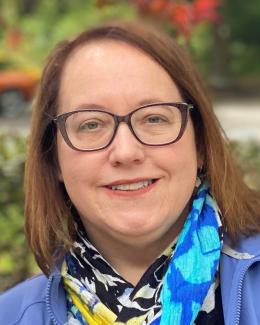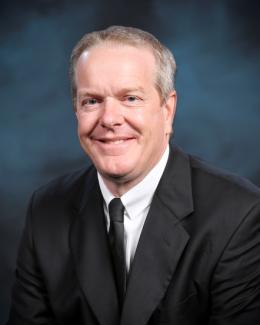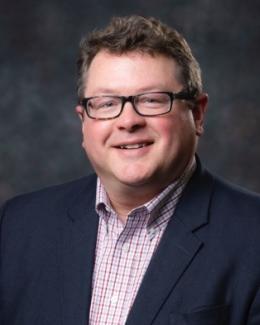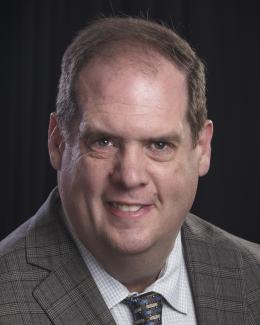Building the future: FIRST Robotics mentoring lets scientists give back
FIRST Robotics mentoring lets scientists give back
May 4, 2017 - The personal satisfaction of helping bright young people see a future for themselves isn’t the only thing driving mentors of the FIRST Robotics program at Oak Ridge National Laboratory (ORNL). Those volunteers are also helping build tomorrow’s maker workforce.
FIRST (For Inspiration and Recognition of Science and Technology) Robotics is an international program begun by Segway inventor Dean Kamen that brings together teams of high school students to build robots for annual competition. But anyone involved in the program will tell you that it does much more. Students are not only building machines, they are learning leadership skills and operating as a small business, with marketing, finance, information technology, and legal functions, for instance. Team members need not be technically skilled to join—students of all talents are welcome.
Another hallmark of the FIRST program is its emphasis on being cooperative with other teams—not just competitive. It is a tenet that FIRST calls Gracious Professionalism.
Regionally, UT-Battelle, LLC—which manages ORNL for the US Department of Energy (DOE)—is a longtime supporter of the program. The organization gives seed money to teams and provides the “field” or game setup available for practice by all the schools prior to the annual Smoky Mountains Regional competition held at Thompson-Boling Arena on the University of Tennessee, Knoxville, campus.
The DOE’s Advanced Manufacturing Office (AMO), part of the Office of Energy Efficiency & Renewable Energy (EERE), also supports a summer robotics internship program in which students get real-world science and engineering experience at ORNL and elsewhere.
Encouraging STEM and individual student success
Many ORNL staff have served as FIRST Robotics mentors and volunteers, donating hundreds if not thousands of hours to the program’s success at regional schools.
In ORNL’s Energy and Environmental Sciences Directorate, researchers have taken a direct role in supporting students. The DOE’s Manufacturing Demonstration Facility (MDF) at ORNL serves as the shop for the nearby Hardin Valley team, and provides 3D-printed parts for other schools. The lab has hosted workshops for teams across the region to learn more about the program and to share learning experiences.
“We look at it as a real opportunity to impact STEM and to highlight manufacturing,” said Craig Blue, director of the EERE programs at ORNL and a long-time FIRST mentor. In fact, the lab through DOE’s Advanced Manufacturing Office has donated some 400 3D printers to schools participating in FIRST Robotics. “When you look at the number of students involved, in the tens of thousands, that’s a workforce in the making,” he added.
This year, UT-Battelle-supported schools included Hardin Valley Academy, Bearden High School, Career Magnet Academy, Central High School, Farragut High School, L&N STEM Academy, Maryville/Blount County high schools (combined team), Oak Ridge High School, Roane County High School, South-Doyle High School, and Webb School of Knoxville.
The Hardin Valley, Farragut, L&N STEM, Oak Ridge, and South Doyle teams advanced to the 2017 world championship competition in Houston in April, where the L&N STEM team won an Imagery Award. The Oak Ridge team won in the quarterfinals competition, and then chose the Hardin Valley and Farragut teams—along with a team from Palo Alto, California—to form an alliance for the semifinals. They eventually were bested by another alliance that would go on to win the championship.
“The motto of our team is passionately pursuing perfection and catching excellence,” said Mark Buckner, leader of ORNL’s Power and Energy Systems group and mentor to the Oak Ridge team. It’s a quote derived from football legend Vince Lombardi and it sums up the ideas of continuous improvement and experiential learning, he noted.
“We designed a robot this year that was very modular. We came in third in the Smoky Mountains Regional competition, but the kids still felt like they needed to change everything ahead of the championships,” said Buckner, who has been a FIRST mentor for 13 years. “We pursue perfection not because it’s ever attainable, but because along the way you catch excellence.”
Back in March, most of the local teams came away from regional competitions in Knoxville and in Myrtle Beach, South Carolina, with awards.
Advancing the maker movement
“It’s an opportunity to give back,” Blue said. “You may see a kid coming into high school as a freshman who is very bright but almost too shy to speak. But by their senior year they’re leading large groups of people” as part of FIRST.
Ken Tobin, director of the Reactor and Nuclear Systems Division at ORNL and a Corporate Fellow researcher, helped found the FIRST team at Roane County High School. “I’ve had the opportunity to mentor kids from Roane County for the past 5 years, exposing them to science and technology that they would not have likely seen until college. I’ve seen many of them decide to move into engineering and other technical fields simply because of their experience in FIRST. It’s been an amazing program that is changing lives.”
“We’re stressing the importance of education, of cooperative learning, of science and technology, and of manufacturing in an age when we’ve gotten away from making things,” Blue said. “The whole maker movement that DOE’s Advanced Manufacturing Office supports coincides with what we’re doing.” AMO and the MDF support DOE initiatives to develop technologies that advance the global competitiveness of US manufacturers.
Jeremy Busby, director of ORNL’s Materials Science and Technology Division and also a mentor to the Hardin Valley team, said, “It’s great to see the kids get interested in STEM. Just as rewarding is watching the kids learn to persevere through challenges because things don’t always go as planned. I know all the local teams worked through some adversity this year. Being able to work through a problem with confidence and a positive attitude will take them a long way in life.”
Bill Peter, director of the MDF at ORNL and likewise a Hardin Valley mentor, said, “By having mentors involved in FIRST Robotics with this large span of backgrounds, the students are getting exposure to skills and activities that can help them early in their life to decide the right career track for them. For example, the students that we are working with are getting exposure to advanced manufacturing, like 3D printing and composites, and how these technologies can be used to change the performance and function of the robot. These design, computation, and engineering lessons are highly sought after by industry.”
The students also benefit from their exposure to someone like Lonnie Love, an ORNL Corporate Fellow researcher and Hardin Valley mentor with world-renowned expertise in robotics who has spent many years as a FIRST mentor.
Mentoring with FIRST “is a passion of mine. It takes all of our time during the build season,” Love said. “We’ve also opened the MDF to all the local high schools” that compete.
Love touted FIRST Robotics’ role in inspiring kids to go into not just engineering, but also a manufacturing sector that is becoming more automated and reliant on technology to stay competitive. “We can’t find people to fill some of these highly technical jobs out in the marketplace. It’s not your parents’ manufacturing where you’re on an assembly line,” Love said. “It’s good-paying jobs and great careers.”
FIRST is also an opportunity to teach students how to work safely, Love noted. In the fall before the build season begins, students from Hardin Valley must be trained at the MDF on how to use power tools, and follow all safety protocols such as calling a work stoppage. Training the students helps reinforce the safety culture among lab employees as well, he noted.
Looking up to teachers, scientists, engineers
Blue said the program helps drive home the message that pursuing a technical career is possible for the students. “One of the premises of the program is the recognition that kids were looking up to basketball, football and music stars. Areas that may be attainable for only a few,” he said. “Why not have them looking up to teachers, scientists, and engineers?”
In the United States and around the world, 85,000 high school students fielded 3,400 FIRST Robotics teams in 2017. The program begins in early January with a kickoff event in which the year’s challenge is introduced. The regional competitions are typically in March, and the championships in late April.
FIRST has become so popular, in fact, that organizers have begun competitions for younger students, even to the kindergarten through fourth-grade level through the LEGO League Jr., Lego League, and Tech Challenge programs.
“There are a lot of unsung heroes here at the lab and elsewhere who volunteer for this program. They’re not looking for recognition; they just do it,” Blue said. “When I went to a LEGO League event recently at Tennessee Tech, I was floored by how many ORNL mentors were there.”
Claus Daniel, director of the Sustainable Transportation program at ORNL, spent several years working with the LEGO League and is now engaged as a mentor for the Farragut High team in FIRST.
“When I started coaching and hosting FIRST Lego League teams at ORNL several years ago, it was amazing to see how new kids on the teams start timid and embarrassed at the beginning of the season and become confident presenters and with greater self-esteem by the end of the season,” Daniel said. “This happens in all programs through high school with young students leading FIRST by the time they graduate.”
“If you’re not involved, you should be,” Buckner said. “These kids will change the future of work. The cross-functional skills they’re learning is anything you can think of needing as a lean startup business. They can use their experience if they pursue college and graduate school—they can participate in research teams from day one. They can use it as they enter the workforce—they will have all the skills companies are looking for. Or they can start their own company.”
“It’s all about the people,” Blue said. “When I see individuals from the lab come and give of themselves to this program, it makes me take another look at them. The fact that they’re willing to spend that much time toward mentoring the next generation is a big statement.”





